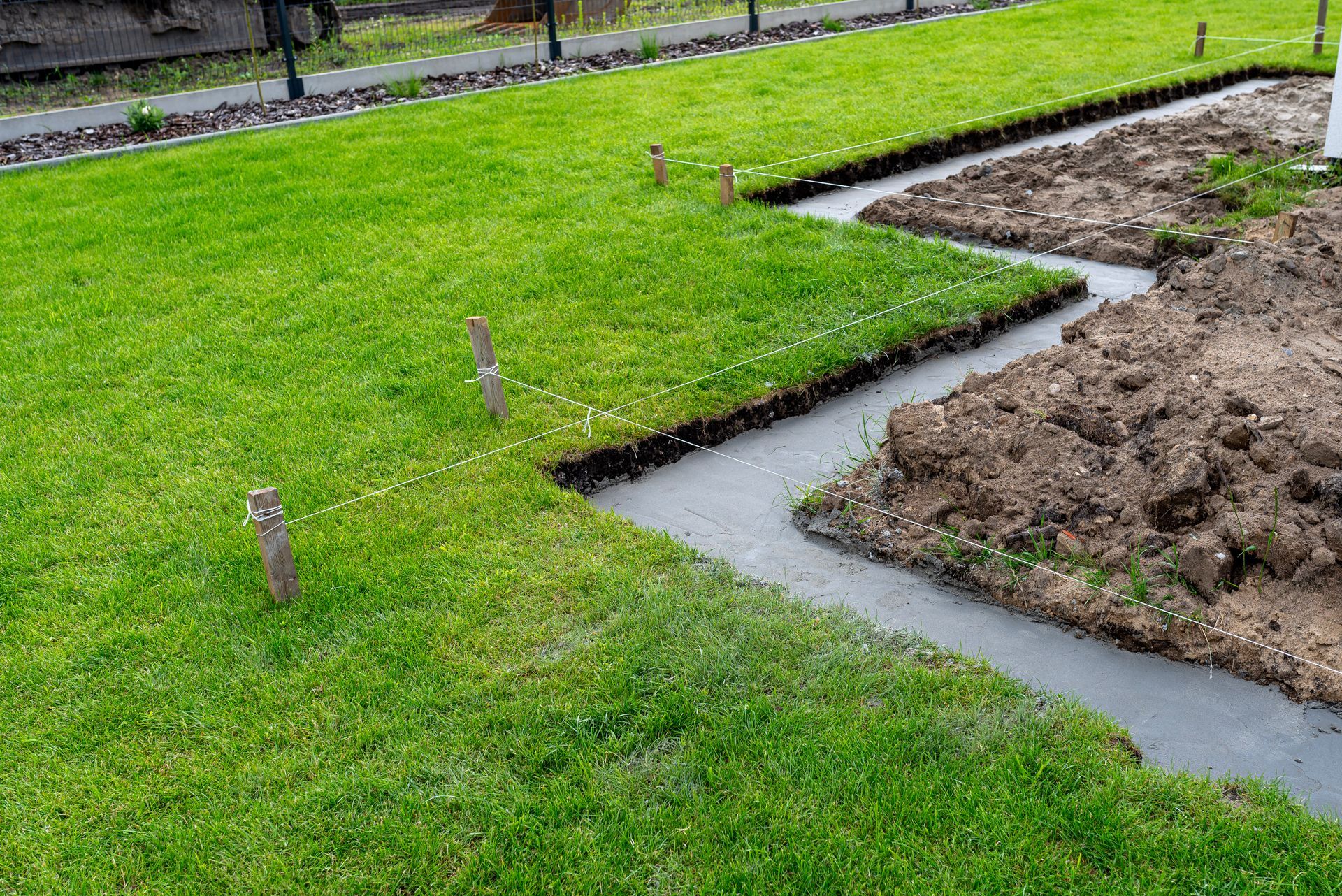Understanding and Solving Lawn Drainage Problems
When it rains, your lawn should thrive, not drown. Identifying the root cause of your lawn's drainage issues is crucial.
From pooling water to soggy patches, the signs are there, but what can you do about it? Understanding the underlying problems and implementing effective solutions in solving lawn drainage problems is key to reclaiming your yard.
Let's explore common causes, DIY fixes, and professional options to turn your waterlogged lawn into a flourishing oasis.

Common Lawn Drainage Problems
Poor Soil Composition
One common lawn drainage problem is poor soil composition. If your soil is heavy clay or compacted, water will have a hard time draining through it. This can lead to water pooling on the surface, which can drown your grass and create muddy patches. To address this issue, you can aerate your lawn to help break up the compacted soil and improve drainage. Adding organic matter, such as compost, can also help improve soil composition and drainage.
Improper Grading
If your lawn is sloped towards your house or a low-lying area, water can collect and cause flooding. To address this issue, you may need to regrade your lawn to create a slope away from your house or install a French drain to redirect water away from problem areas.
Clogged or damaged drainage systems
Clogged or damaged drainage systems can also cause lawn drainage problems. If your gutters are clogged or your downspouts are not directing water away from your house, water can pool around your lawn and cause damage. Make sure to regularly clean your gutters and inspect your drainage systems for any clogs or damage. Additionally, make sure that your downspouts are directing water at least 10 feet away from your house to prevent water from pooling near your foundation.
Overwatering
Overwatering can also create lawn drainage problems. If you water your lawn too frequently or for too long, the soil can become saturated and prevent proper drainage. To prevent overwatering, make sure to water your lawn deeply but infrequently. You can also invest in a rain gauge to track how much water your lawn is receiving and adjust your watering schedule accordingly.
Signs to Watch For
Watching for signs and symptoms of poor lawn drainage is crucial to addressing potential issues early on. Some drainage warning signs to be aware of include standing water, soggy patches, or areas of the lawn that never seem to dry out. If you notice these indicators, it's essential to start troubleshooting methods promptly. Identifying drainage issues early can save you time and money in the long run.
Look out for water pooling near the foundation of your home, as this could lead to structural damage over time. Additionally, inspect your lawn after heavy rainfall to see how water is flowing or accumulating.
Prevention strategies can also help you avoid significant lawn drainage problems. Regularly inspecting your lawn for any warning signs, such as areas of poor drainage, can help you catch issues before they worsen. Ensuring proper grading and slope can also aid in preventing water from pooling in unwanted areas. By staying vigilant and implementing these prevention strategies, you can maintain a healthy and well-drained lawn.
DIY Solutions for Solving Lawn Drainage Problems
To enhance your lawn's drainage, consider implementing simple do-it-yourself solutions that can effectively address water pooling and soggy areas.
One effective DIY solution is to create gravel trenches. By digging shallow trenches filled with gravel in problem areas, excess water is directed away from the surface, helping to prevent waterlogging.
Another practical option is to install French drains. French drains consist of perforated piping surrounded by gravel or rock that helps to redirect water flow and alleviate water accumulation. These drains can be strategically placed to intercept water and guide it away from trouble spots, promoting better drainage throughout your lawn.
Both gravel trenches and French drains are cost-effective and relatively easy to install, making them accessible solutions for improving your lawn's drainage system. By taking these DIY steps, you can effectively mitigate drainage issues, prevent water damage, and ensure a healthier, more vibrant lawn for you to enjoy.
Professional Drainage Options to Consider
Consider consulting with a professional landscaper for expert drainage solutions tailored to your lawn's specific needs. These professionals offer expert installation of advanced technology to address your drainage issues effectively. With their knowledge and experience, they can assess the root cause of your lawn's drainage problems and provide customized solutions that go beyond what DIY methods can achieve.
Professional landscapers like Lone Oak Lawns have access to advanced drainage systems and equipment that can efficiently redirect excess water away from your lawn. They can install French drains, dry wells, or underground piping to ensure proper water flow and prevent waterlogging. Their expertise enables them to implement solutions that not only solve current issues but also prevent future drainage problems.
Maintenance Tips for Long-Term Success
For long-term success in maintaining proper drainage for your lawn, regularly inspect and clear out any debris blocking the water flow channels. Proper grading of your lawn is essential to ensure water flows away from your home's foundation. Be sure to check that the soil slopes away from buildings and towards drainage areas.
Inspect your gutters and downspouts to ensure they're clear of debris and directing water away from your house. Strategic landscaping can also help with drainage. Consider planting water-absorbing plants and creating rain gardens to help manage excess water. Additionally, installing a French drain or dry well can help redirect water away from problem areas.
Remember to monitor your lawn after heavy rain to identify any new drainage issues that may arise. By staying proactive and implementing these maintenance tips, you can effectively manage and prevent lawn drainage problems for the long term.








